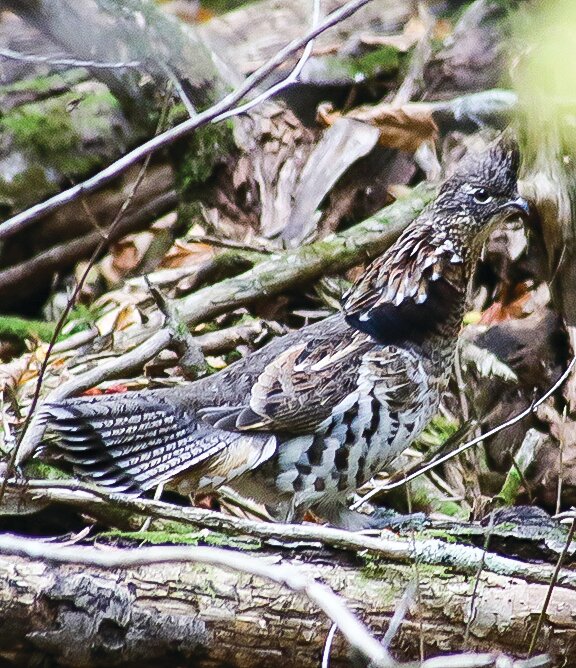Support the Timberjay by making a donation.
Blockbuster bear numbers, mixed reports on ruffed grouse
REGIONAL— Bear hunters are reporting one of their best seasons in years as a poor natural food crop has brought bears into baits like hunters haven’t experienced since at least 2021. As …
This item is available in full to subscribers.
Attention subscribers
To continue reading, you will need to either log in to your subscriber account, below, or purchase a new subscription.
Please log in to continue |
Blockbuster bear numbers, mixed reports on ruffed grouse
REGIONAL— Bear hunters are reporting one of their best seasons in years as a poor natural food crop has brought bears into baits like hunters haven’t experienced since at least 2021.
As of this week, with the season set to end Sunday, hunters had registered 3,333 bears, already the highest harvest in more than five years.
“We kind of expected a good hunting season because of the limited natural foods,” said Courtney Clark, assistant area wildlife manager for the Department of Natural Resources in Tower.
But the numbers are surprising even wildlife managers as hunter success this year is exceeding 60 percent in some areas. In zone 25, for example, hunters have registered 215 bears out of 325 total permits issued by the DNR. That’s a success rate of 66 percent. Zone 25 includes far northern St. Louis and eastern Koochiching counties.
In zone 31, which encompasses the entire North Shore, inland to the Ely and Embarrass areas, hunters have registered 242 bears out of 400 permits issued, a success rate of 60 percent.
Statewide, hunters registered 1,203 bears on the opening day of the season, nearly as many as the just over 1,500 bears registered all last season. Last year, abundant natural foods limited hunter success.
This year’s high harvest could impact the DNR’s efforts to continue to recover the bear population, which was depleted after several years of aggressive harvest more than a decade ago cut the bear population roughly in half. While the population has recovered in many parts of the state, bears have been slower to rebound in far northern Minnesota. While the public did report many more bear sightings in the region this summer, that’s likely a reflection of the poor natural food supply than a spike in actual bear numbers.
Ruffed grouse
While initial reports on the grouse season were less than enthusiastic, Clark said she’s hearing better reports in the past week or two as the leaves are dropping and the summer coveys are dispersing.
“We were expecting really good numbers from the drumming counts this spring,” said Clark, but the heavy June rains and flooding likely impacted grouse reproduction. But just as the flooding impacts were spotty, it appears grouse numbers are as well. “We probably have pockets of good population out there,” said Clark. We’re hearing from some hunters that they’re filling out while others aren’t seeing many birds.”
Regardless, Clark said hunters will need to temper their expectations, particularly after last year’s exceptionally high grouse numbers.






